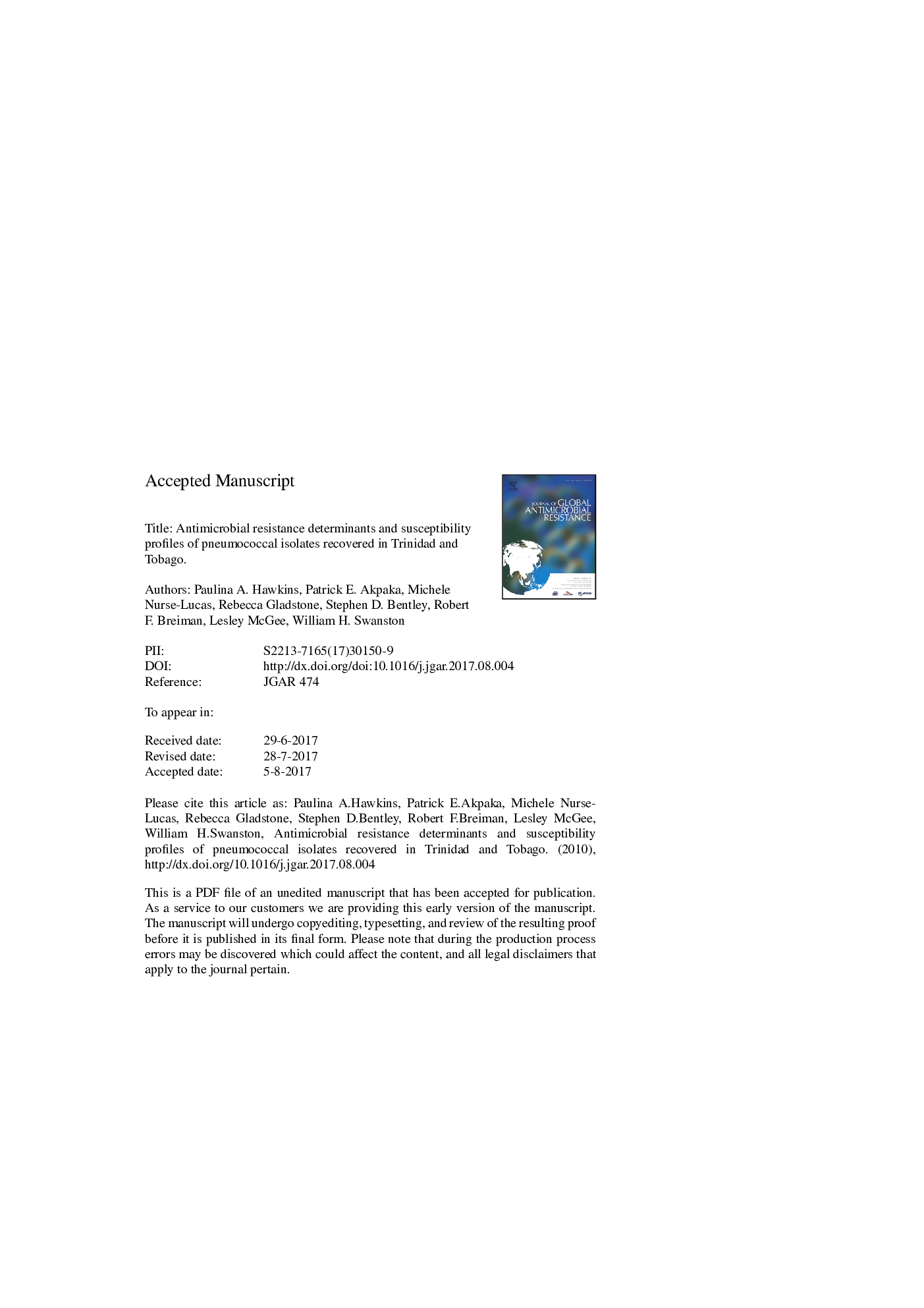| Article ID | Journal | Published Year | Pages | File Type |
|---|---|---|---|---|
| 8746367 | Journal of Global Antimicrobial Resistance | 2017 | 16 Pages |
Abstract
Forty-one isolates (41.8%) were predicted as resistant to at least one antimicrobial class, including 13 (13.3%) resistant to at least three classes. The most common serotypes associated with antimicrobial resistance were 23F (n = 10), 19F (n = 8), 6 B (n = 6) and 14 (n = 5). The most common serotypes associated with penicillin non-susceptibility were 19F (n = 7) and 14 (n = 5). Thirty-nine isolates (39.8%) were positive for PI-1 or PI-2 type pili: 30 (76.9%) were PI-1+, 4 (10.3%) were PI-2+ and 5 (12.8%) were positive for both PI-1 and PI-2. Of the 13 multidrug-resistant isolates, 10 belonged to globally distributed clones PMEN3 and PMEN14 and were isolated in the post-PCV period, suggesting clonal expansion.
Related Topics
Life Sciences
Immunology and Microbiology
Applied Microbiology and Biotechnology
Authors
Paulina A. Hawkins, Patrick E. Akpaka, Michele Nurse-Lucas, Rebecca Gladstone, Stephen D. Bentley, Robert F. Breiman, Lesley McGee, William H. Swanston,
